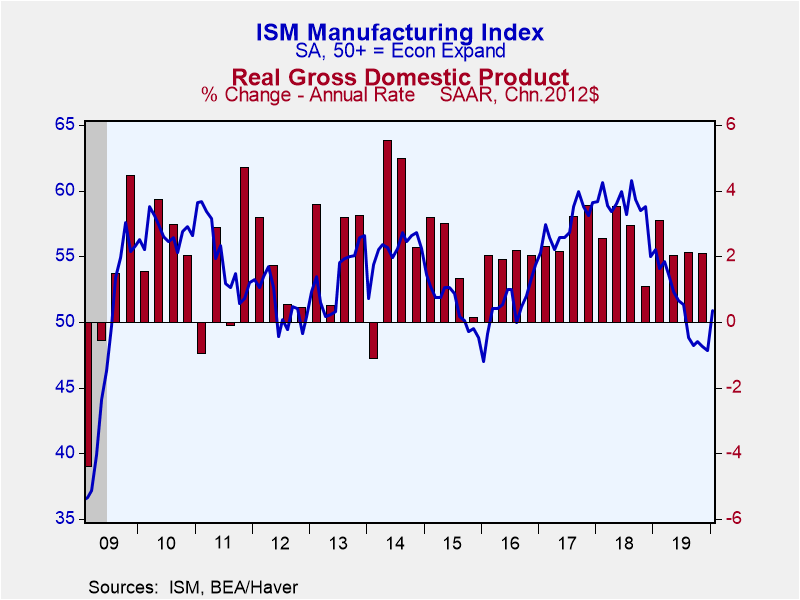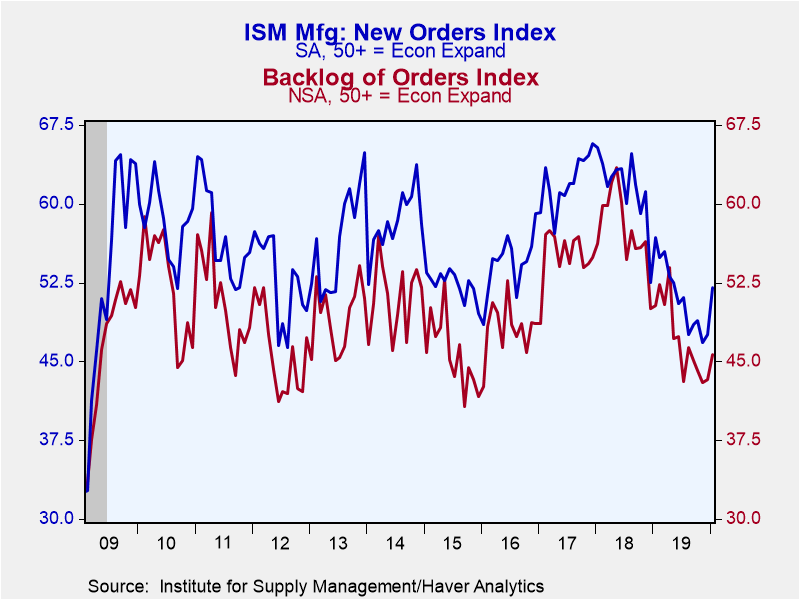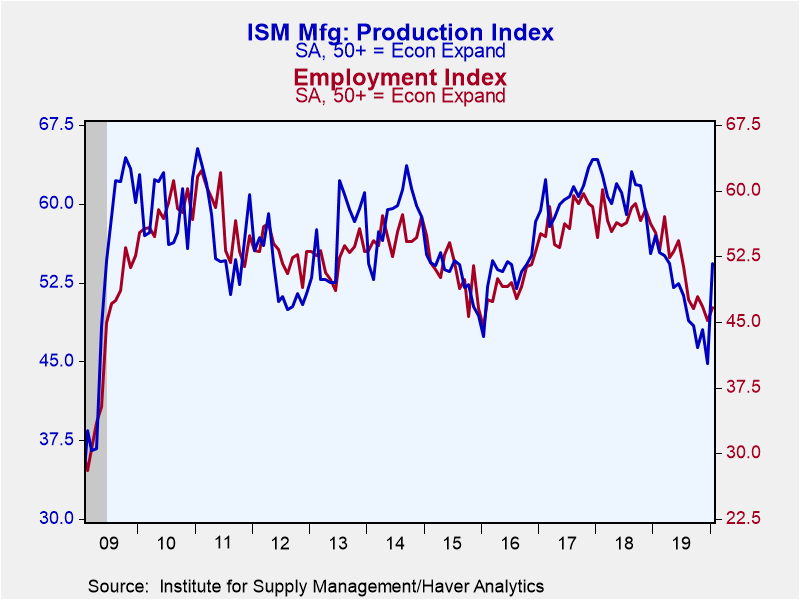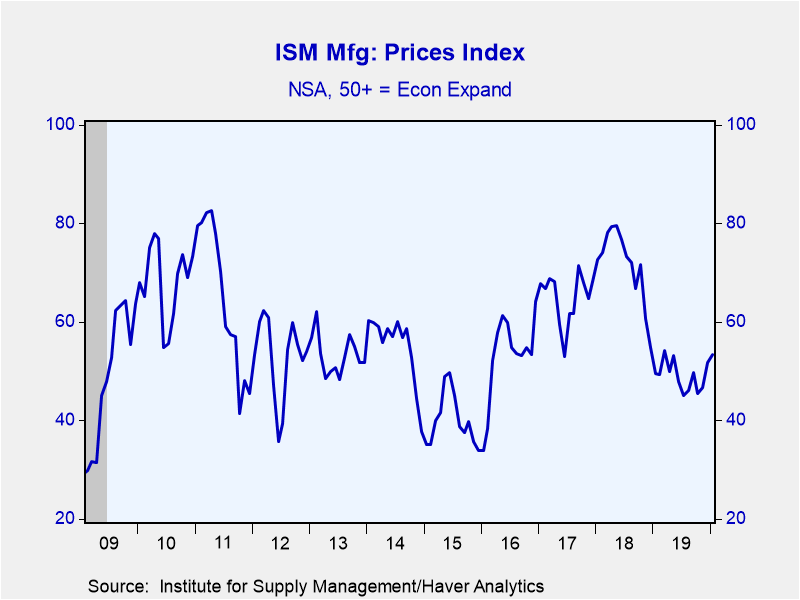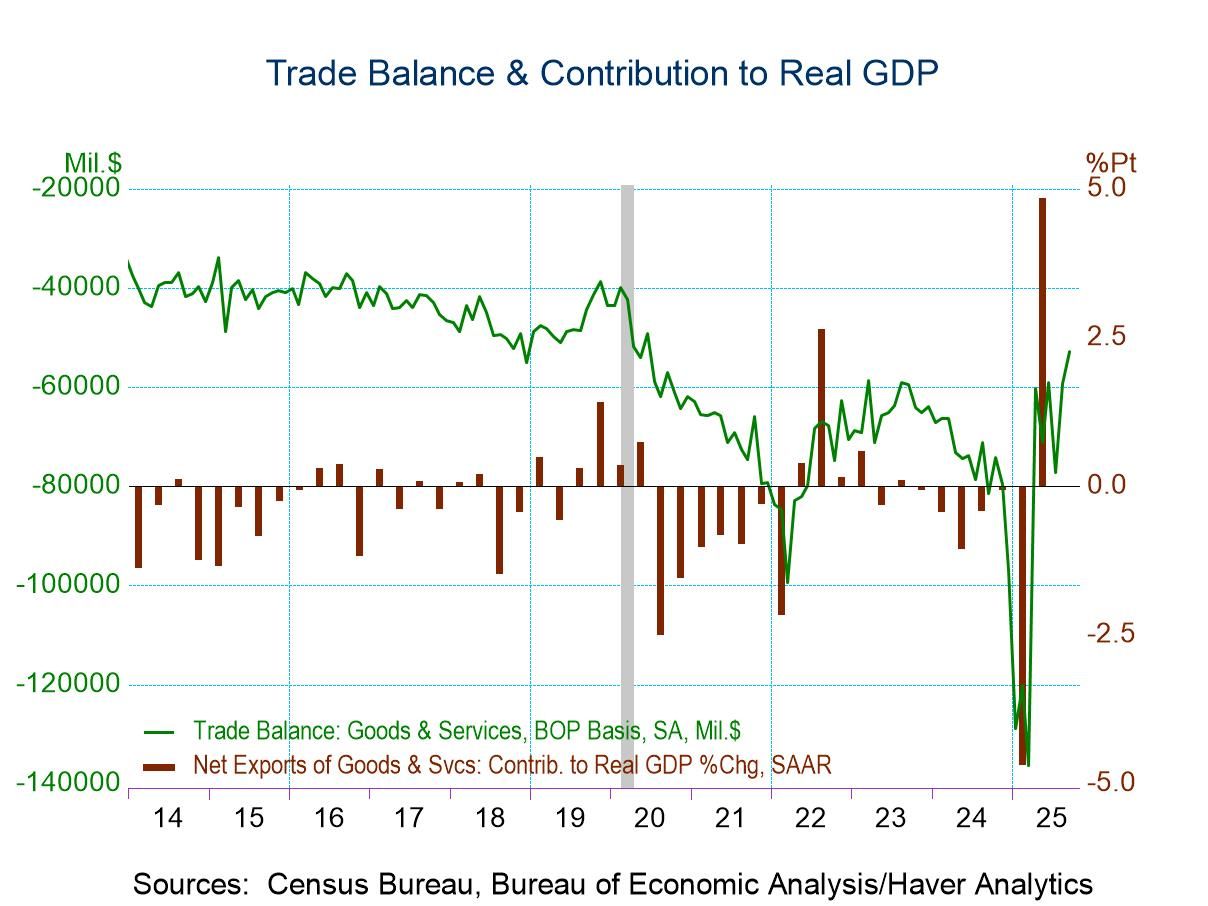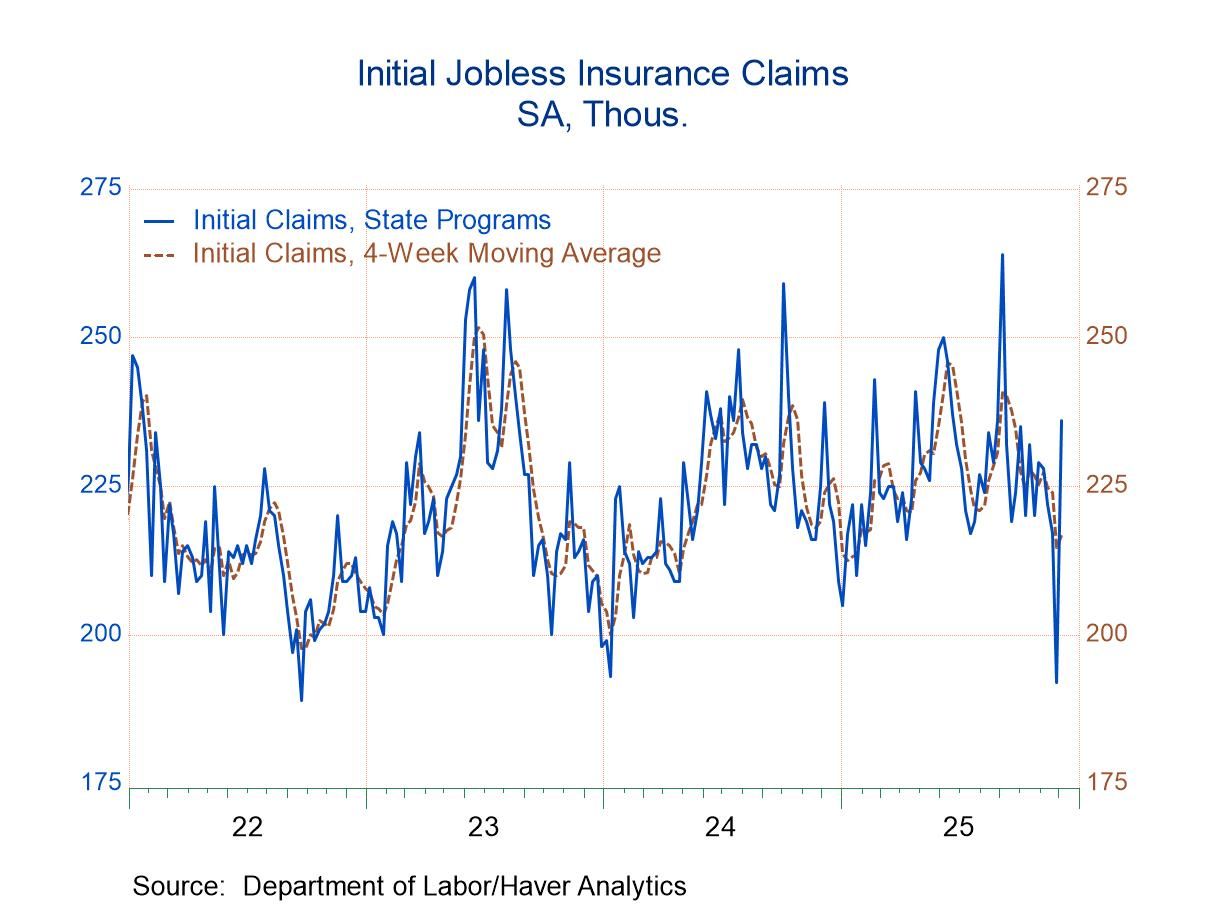 Global| Feb 03 2020
Global| Feb 03 2020ISM Manufacturing Index Jumps; Prices Strengthen
by:Tom Moeller
|in:Economy in Brief
Summary
Activity in the factory improved last month. The Institute for Supply Management (ISM) reported that its composite index of manufacturing sector activity for January rose to 50.9 after falling to 47.8 in December, revised from 47.2. [...]
Activity in the factory improved last month. The Institute for Supply Management (ISM) reported that its composite index of manufacturing sector activity for January rose to 50.9 after falling to 47.8 in December, revised from 47.2. It was the highest reading since July following five straight months below 50, which is the dividing line between rising and falling activity. A reading of 48.8 had been expected in the Action Economics Forecast Survey. During the last 15 years, there has been a 69% correlation between the composite index and the quarterly change in real GDP.
The rise in the composite index reflected notable increases in new orders and production. The orders index strengthened to 52.0, its highest level since May after being below 50 for the last five months. Production also rose above 50 for the first time since July. The improvement to 54.3 reflected a greatly increased 25% (NSA) of respondents reporting higher production while a weakened 19% (NSA) reported a decline. Showing modest declines were the inventories and supplier delivery series.
The employment index also improved modestly to 46.6, but remaining below 50, it indicated a decline in factory sector payrolls for the sixth straight month. A greatly lessened twelve percent (NSA) of survey respondents reported more hiring while 22% (NSA) reported a decline. During the last 15 years, there has been an 80% correlation between the index level and the m/m change in factory sector payrolls.
The prices paid index increased to 53.3. It was the second time since May that the figure was above the break-even level of 50. An increased 24% (NSA) of survey respondents indicated higher prices while 17% reported price declines.
Amongst other series reported by the ISM, the export order index surged to 53.3, its highest level since September 2018. The import index also strengthened to the highest level since early-2019. The unfilled order series also rose modestly, but at 45.7, it remained well below the 2018 high of 63.5 and indicated falling backlog levels.
The ISM figures are diffusion indexes where a reading above 50 indicates expansion. The figures from the Institute for Supply Management can be found in Haver's USECON database; further detail is found in the SURVEYS database. The expectations number is available in Haver's AS1REPNA database.
| ISM Mfg (SA) | Jan | Dec | Nov | Jan'19 | 2019 | 2018 | 2017 |
|---|---|---|---|---|---|---|---|
| Headline Index | 50.9 | 47.8 | 48.1 | 55.5 | 51.2 | 58.9 | 57.4 |
| New Orders | 52.0 | 47.6 | 46.8 | 56.8 | 51.1 | 61.6 | 62.1 |
| Production | 54.3 | 44.8 | 48.0 | 57.0 | 51.2 | 60.9 | 60.9 |
| Employment | 46.6 | 45.2 | 46.8 | 55.2 | 50.9 | 56.9 | 56.8 |
| Supplier Deliveries | 52.9 | 54.6 | 52.0 | 56.2 | 52.9 | 62.0 | 56.8 |
| Inventories | 48.8 | 49.2 | 47.2 | 52.9 | 49.8 | 52.9 | 50.4 |
| Prices Paid Index (NSA) | 53.3 | 51.7 | 46.7 | 49.6 | 49.1 | 71.7 | 65.0 |
Tom Moeller
AuthorMore in Author Profile »Prior to joining Haver Analytics in 2000, Mr. Moeller worked as the Economist at Chancellor Capital Management from 1985 to 1999. There, he developed comprehensive economic forecasts and interpreted economic data for equity and fixed income portfolio managers. Also at Chancellor, Mr. Moeller worked as an equity analyst and was responsible for researching and rating companies in the economically sensitive automobile and housing industries for investment in Chancellor’s equity portfolio. Prior to joining Chancellor, Mr. Moeller was an Economist at Citibank from 1979 to 1984. He also analyzed pricing behavior in the metals industry for the Council on Wage and Price Stability in Washington, D.C. In 1999, Mr. Moeller received the award for most accurate forecast from the Forecasters' Club of New York. From 1990 to 1992 he was President of the New York Association for Business Economists. Mr. Moeller earned an M.B.A. in Finance from Fordham University, where he graduated in 1987. He holds a Bachelor of Arts in Economics from George Washington University.


